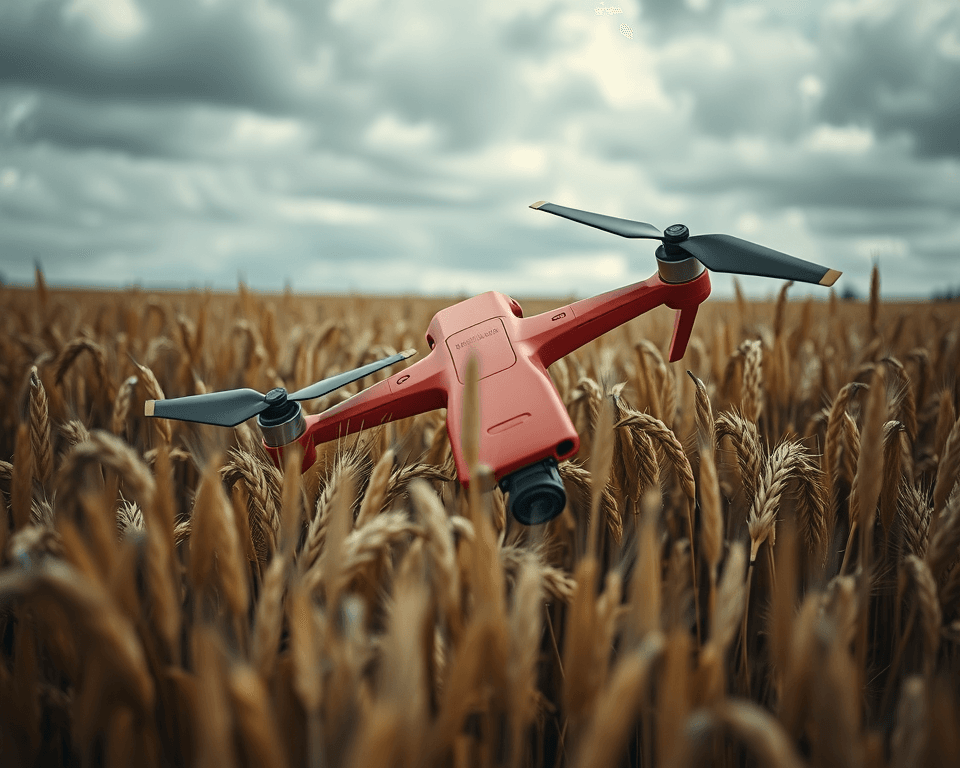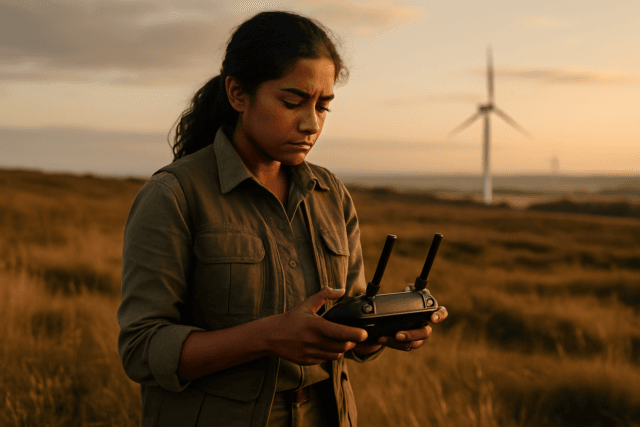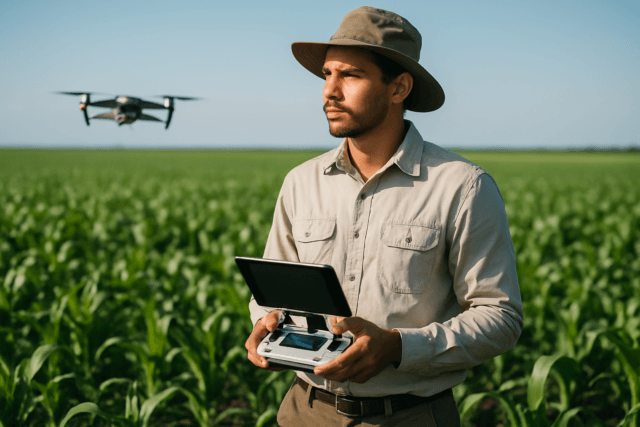Drones have become increasingly popular for recreational and commercial use, offering stunning aerial perspectives and valuable data collection capabilities. However, with their growing presence in the skies, the risk of drone crashes also increases. Understanding the common causes of these incidents and knowing how to prevent and handle them is crucial for every drone pilot.
Why Drones Crash: Common Culprits
Drone crashes can stem from a variety of factors, often a combination of human error, technical malfunctions, and environmental conditions.
1. Pilot Error:
- Inexperience: Inexperienced pilots may lack the necessary skills to handle complex maneuvers or react to unexpected situations, leading to crashes. A study by UAV Coach found that nearly 64% of drone accidents are attributed to pilot error.
- Improper Maneuvering: Overcorrecting, flying too close to obstacles, or losing situational awareness can all result in collisions.
- Ignoring Regulations: Failure to adhere to drone laws, such as flying in restricted airspace or exceeding altitude limits, can lead to accidents.
- Distraction: A moment of distraction can cause you to lose track of your drone.
2. Technical Malfunctions:
- Battery Issues:
- Insufficient Charge: Running out of battery mid-flight is a common cause of crashes. Always fly with fully charged batteries and land with at least 30% power reserve.
- Battery Degradation: Overcharging, deep discharging, or using old batteries can reduce their capacity and lead to unexpected power failures.
- Battery Malfunction: Although not as common, internal failures can cause a battery to discharge rapidly.
- Loss of Signal: Interference, distance, or obstructions can disrupt the connection between the drone and the controller, leading to loss of control.
- GPS Signal Loss: Flying indoors or in areas with high magnetic interference can impact the drone’s GPS system, hindering its ability to return home or maintain stable flight.
- Compass Error: Magnetic or radio frequency interference can detune the compass, causing the drone to fly erratically.
- Motor or Propeller Problems: Damaged, loose, or dirty propellers can cause unstable flight. Motor malfunctions can result in unsteady takeoffs or complete failure.
- Software Glitches: Software problems can lead to flight complications and drone damage.
- Loose Connections: Cables can become loose over time, causing loss of signal and crashes.
3. Environmental Factors:
- Weather Conditions:
- Wind: Strong winds can push the drone off course or make it difficult to control.
- Rain/Humidity: Moisture can damage the drone’s electronics and affect sensor accuracy.
- Temperature Extremes: Cold temperatures can reduce battery performance, while extreme heat can lead to overheating.
- Fog/Smoke: Conditions that limit visibility also limit the ability of the drone’s sensors to function.
- Obstacles: Collisions with trees, buildings, or birds are common causes of crashes, even with obstacle avoidance systems.
- Electromagnetic Interference: High voltage power lines and cell phone towers can interfere with the drone’s electronics.
- Air Density: Flying in high-altitude areas where the air is thinner can reduce lift, forcing drones to expend more energy to stay aloft, consequently shortening the flight time.
Steer Clear: Drone Crash Prevention Tips
Preventing drone crashes requires a combination of careful planning, diligent maintenance, and responsible flying practices.
1. Pre-Flight Checks are Key:
- Weather Check: Always check the weather forecast before flying. Avoid flying in strong winds, rain, or extreme temperatures.
- Drone Inspection: Thoroughly inspect your drone before each flight. Look for cracks, loose parts, damaged propellers, and any other signs of wear and tear.
- Battery Check: Ensure your batteries are fully charged and in good condition. Check the battery level indicator on the drone and the controller.
- Software/Firmware Updates: Keep your drone’s software and firmware up to date to ensure optimal performance and security.
- Compass Calibration: Calibrate the compass before each flight, especially if you have traveled a significant distance since the last calibration.
- GPS Signal: Wait for a strong GPS signal before taking off.
- Set Return to Home (RTH): Always set your RTH point before takeoff, with an altitude higher than any obstacles in the area.
2. Fly Responsibly:
- Practice in Open Areas: Start by practicing in open, obstacle-free areas to get comfortable with the drone’s controls.
- Maintain Visual Line of Sight (VLOS): Always keep your drone within your direct line of sight.
- Be Aware of Surroundings: Pay close attention to your surroundings and avoid flying near obstacles, people, and animals.
- Fly at Safe Altitudes: Stay below the legal altitude limit (400 feet in the UK) to avoid interfering with manned aircraft.
- Respect Restricted Airspace: Obtain permission before flying in restricted airspace, such as near airports or military bases.
- Avoid Interference: Avoid flying near power lines, cell phone towers, and other sources of electromagnetic interference.
3. Maintenance Matters:
- Regular Cleaning: Clean your drone regularly with a soft, dry cloth to remove dirt, dust, and debris.
- Propeller Care: Inspect propellers for damage and replace them immediately if necessary.
- Battery Maintenance: Follow the manufacturer’s guidelines for battery care and storage.
- Professional Servicing: Schedule regular servicing with a qualified drone technician to identify and address potential problems.
4. Know Your Drone’s Limits:
- Obstacle Avoidance: Don’t rely solely on obstacle avoidance systems. They may not detect all objects, especially thin wires or branches.
- Wind Resistance: Be aware of your drone’s wind resistance capabilities and avoid flying in conditions that exceed its limits.
- Range: Keep your drone within the recommended range to avoid signal loss.
Brace for Impact: What to Do After a Drone Crash
Despite your best efforts, drone crashes can still happen. Knowing how to respond in the aftermath can minimize further damage and ensure safety.
1. Prioritize Safety:
- Assess the Scene: Check for any hazards, such as downed power lines or flammable materials.
- Secure the Area: Prevent people from approaching the crash site until it is safe.
2. Immediate Actions:
- Power Down: Immediately turn off the drone and the controller.
- Disconnect the Battery: Remove the battery from the drone to prevent further damage.
- Document the Scene: Take photos and videos of the crash site, including the drone’s position and any damage to surrounding property.
3. Recovery and Inspection:
- Retrieve the Drone: Carefully retrieve the drone and inspect it for damage.
- Clean the Drone: Use alcohol pads to remove any dirt, sand, or debris from the drone.
- Assess the Damage: Note all visible damage to the drone, including propellers, motors, gimbal, and camera.
4. Data Retrieval:
- Recover Flight Logs: Download the flight logs from the drone or the controller to analyze the cause of the crash.
- Check Memory Card: Remove the memory card from the camera and check for any corrupted files.
5. Reporting and Repair:
- Report the Accident: If the crash caused damage to property or injury to people, report the accident to the appropriate authorities.
- Contact Manufacturer/Repair Service: Contact the drone manufacturer or a qualified repair service to assess the damage and obtain a repair estimate.
UK Drone Laws: Fly Safe and Legal
In the UK, drone operations are regulated by the Civil Aviation Authority (CAA). Understanding and complying with these regulations is essential for safe and legal flying. As of April 2025, some key regulations include:
- Registration: Anyone operating a drone with a camera in the UK weighing between 250g and 25kg must register with the CAA and obtain an Operator ID. The Operator ID must be displayed on the drone.
- Flyer ID: Anyone intending to fly a drone (even if it’s not yours) must pass an online theory test and get a Flyer ID.
- Height Limit: Drones must not fly higher than 400 feet (120 meters) above the surface.
- Visual Line of Sight (VLOS): Operators must maintain a direct, unaided visual line of sight with their drone at all times.
- Distance from People:
- Drones under 250g can fly closer to people, but not over crowds.
- Drones weighing 250g or more must remain 50 meters away from people and 150 meters away from residential, commercial, or industrial areas.
- Restricted Airspace: Permission is required before flying in restricted airspace.
- Airport No-Fly Zone: Drones must not be flown within 5 kilometers (3 miles) of an airport.
- Insurance: Commercial drone operators are required to have insurance. Hobbyists are highly encouraged to get insurance.
Drone Insurance: Protecting Your Investment
Drone insurance is an essential safeguard for both commercial and recreational operators. It provides financial protection in the event of an accident or safety incident. Types of drone insurance include:
- Liability Insurance: Covers you if your drone causes injury to someone or damage to property.
- Hull Coverage: Covers the cost of repairing or replacing your drone if it is damaged in an accident.
Drones Helping With Accident Investigation
Drones are increasingly used for accident investigation and reconstruction, including road accidents and aircraft accidents. Drones can capture aerial images and videos of accident sites, providing a comprehensive view of the scene. Drones can create 3D models of accident sites, which can be used for analysis and presentation in court.
Conclusion
Drone crashes are a reality of drone operations, but by understanding the common causes, following preventive measures, and knowing how to respond to accidents, drone pilots can minimize the risk of these incidents and ensure the safety of themselves and others. Always stay informed of and adhere to local regulations.





